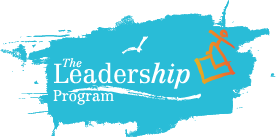
I have strong memories, as I’m sure many people do, of some very bad lessons when I was in school. Whether the subject was math, history, or personal hygiene, as a student experiencing a boring or confusing lesson, I mentally left the room. These many years later it’s hard to be sure if the lesson itself or the teaching was the problem. But as a creator of curriculum now, I know that if a lesson is well crafted, even the most inexperienced teacher or facilitator can make it effective.
So what is an effective lesson? To be effective, a lesson has to include clear, easy to follow instructions; it has to have a clear objective—what we want students to walk away having learned or understood; and it has to be engaging enough to keep students interested and participating throughout. To achieve these goals, a well-defined lesson structure is indispensable.
This holds true whether we are talking about lessons in academics or social-emotional learning (SEL). It holds true whether we are talking about lessons for youth or for adults. As a workshop or class participant, I want my interest piqued and I want to leave feeling that I have learned or accomplished something worthwhile.
Lessons that are effectively structured do not attack the main topic immediately, but rather ease into it in a number of ways. They may:
- lead with a quote related to the subject to jumpstart discussion
- begin with a short activity that brings lesson themes into focus
- begin with a brief ritual to ready the group for a specific type of instruction
Whichever opening choice you build into a lesson, make sure the introductory activity is not a throw-away. When thoughtfully designed, it will set the tone for the rest of the lesson and create a safe space in which to explore a topic more deeply.
Moving on from the opening, or warm-up, to the core activity, an effective lesson will incorporate differentiated learning approaches. Writing, group work, drawing, music, debate, and physical movement are some of the instructional strategies that can be incorporated into a lesson. This variety empowers participants with a wide range of interests and strengths, keeping them engaged. Teaching a science lesson about absorption? Have a few students stand in close formation as a polymer molecule and then expand their perimeter by stretching their arms out and stepping back as they “absorb” the students who represent water into the middle of the circle. The lesson is fun, and likely to leave a lasting image and impression.
Making a lesson fun is a powerful strategy in rendering it effective. Enthusiastic participation can be a vehicle for unselfconscious contributions to group activities and discussions, and will pave the way for original, out-of-the-box thinking. The key to transforming these contributions into specific takeaways, is to process the experience in relation to the lesson topic. Ask the students about their experience and observations in the expanding molecule formation, and they will summarize the lesson for you in their own words; the lesson objective has been achieved and will be remembered.
Processing is equally vital when teaching SEL lessons. If the lesson theme is the connection between our values and our behavior, hearing participants’ insights will inform the teacher/facilitator what was learned and what follow-up is appropriate. To be effective regardless of the level of facilitator expertise, lesson structure will include processing questions that comfortably guide even a novice teacher to engage students in critical thinking and lead them to find real world applications for their observations and experiences.
Finally, including a brief closing activity to wrap up the lesson gives it a clear stopping point. Rather than letting the energy generated during the lesson fizzle out, finish strong with a focus on the lesson objective and its relevance to real life. Conclude the SEL lesson above, for instance, with a reflection on personal values by asking participants “What is one value you would like to live by?”.
The essential keys, then, of effective lesson structure can be summed up as:
- a well-defined learning objective,
- user friendly directions for teachers,
- differentiated instructional methods,
- engaging, enjoyable activities, and
- a processing guide to connect participants’ lesson experience to real world applications.



Comments [0]
Click here to read/write comments